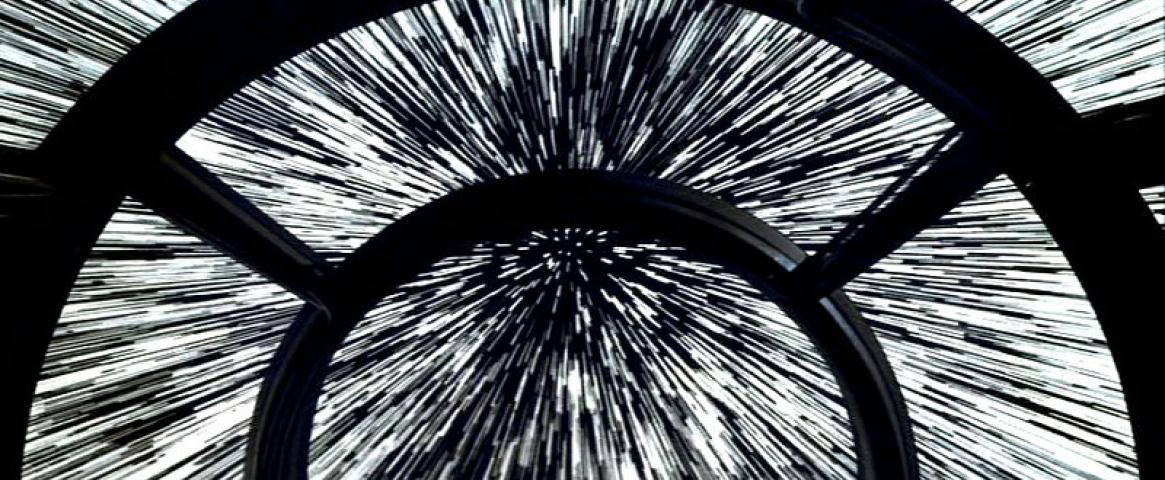By Myra Richardson
Whether you're watching Star Wars or Star Trek, Marvel or Interstellar, science fiction movies all have one thing in common — rockets zipping through space at warp speed. To reach such speeds and send us to even the nearest stars, we need a rocket like the ones in the movies, a rocket powered by a fuel that can shoot us off at no less than half the velocity of light.
Researchers have stumbled across an unusual nuclear phenomenon that might have us racing towards other galaxies within the next ten years.
In the October issue of Acta Astronautica, they have described a potential application of partial nucleon annihilation, stating that simply hitting hydrogen with the flash of a laser could, in principle, produce enough thrust to propel objects to near-light speeds.
Contrary to its calamitous-sounding name, nucleon annihilation doesn’t wreak havoc on a human scale, but subatomic society isn’t so lucky. Subatomic particles are shot into their antimatter twins, particles that differ from the originals only in charge. This collision sends fragments of the two soaring, producing enormous energy. These sailing particles could give big bulky rockets the thrust they need to shoot through space at near-light speeds.
Annihilation can generate enough thrust for interstellar travel, no problem, but it still falls short in terms of fuel. When it comes to powering annihilation, antimatter is key. The problem is antimatter doesn’t come cheap, it uses far more energy than it produces.

So, to make our great galactic escape, scientists need a fuel that is abundant and can be used for annihilation. But physicists Leif Holmlid of the University of Gothenburg and Sindre Zeiner-Gundersen of the University of Iceland may have just the solution, hydrogen and partial annihilation.
With the blink of a laser, they could trigger the collision of two hydrogen nuclei, annihilating them, but not completely. This partial annihilation would send even smaller particles soaring away at near-light speed, powered by earth’s most ubiquitous element, hydrogen.
And at first glance Holmlid thought the reaction was another nuclear process, fusion. Though soon he saw it was not, discovering it was partial annihilation took longer. “There were no such [eureka] moments. It took years,” he recalled, but eventually, the process became clear.
But it wasn’t as simple as just sharing what he found, what Holmlid saw was unheard of. Physicist Shawn Westmoreland described two cases in which the reaction violated conservation laws.
These laws state that the value of energy or momentum must be equal on opposing sides of a reaction. In the case of charge, he said, “The initial side of [the reaction] has a total charge of plus two and the other side has a total charge of plus zero." If Holmlid’s reaction wasn’t such an outlaw, these two charges should be balanced.
But some scientists are more optimistic, the rules of physics have changed before. Joseph Breeden, a nuclear physicist, said that the science was sound and ahead of its time. He notes that a number of the references in the paper are to Holmlid’s own work because Homlid “has run well ahead of the rest of the field” and it may take some time for others to understand and replicate it.
If the reaction can be implemented, Breeden foresees huge benefits. It would be far safer and cheaper than alternative methods, he said, since it could be produced on a smaller scale than fission or fusion reactors. And, though the reaction does produce radiation, it would be safer than typical nuclear processes, which are chain reactions and could be dangerous if something goes wrong. Since this process would be controlled by a laser, runaway reactions could be stopped with the flip of a switch.
Both Westmoreland and Breeden agree, if what Holmlid saw can be reliably recreated, it would be revolutionary, all that’s left is for others to do just that. Holmlid eagerly awaits replication of his work as well, but until that day comes, he will continue to investigate the reaction so that, if his plans pan out, it can be used on earth and beyond.
Myra Richardson is a third-year at the University of Virginia majoring in Engineering Science. She is participating in the National Association of Science Writers Virtual Summer Mentorship Program and is a marketing assistant at Compass West Realty. She posts her stories on Medium and her blog AvidAnalysis. Follow her on Twitter @MyraLRichardson or email her at richardsonml521@gmail.com.
This story was produced as part of NASW's David Perlman Summer Mentoring Program, which was launched in 2020 by our Education Committee. Richardson was mentored by Vandana Suresh.





